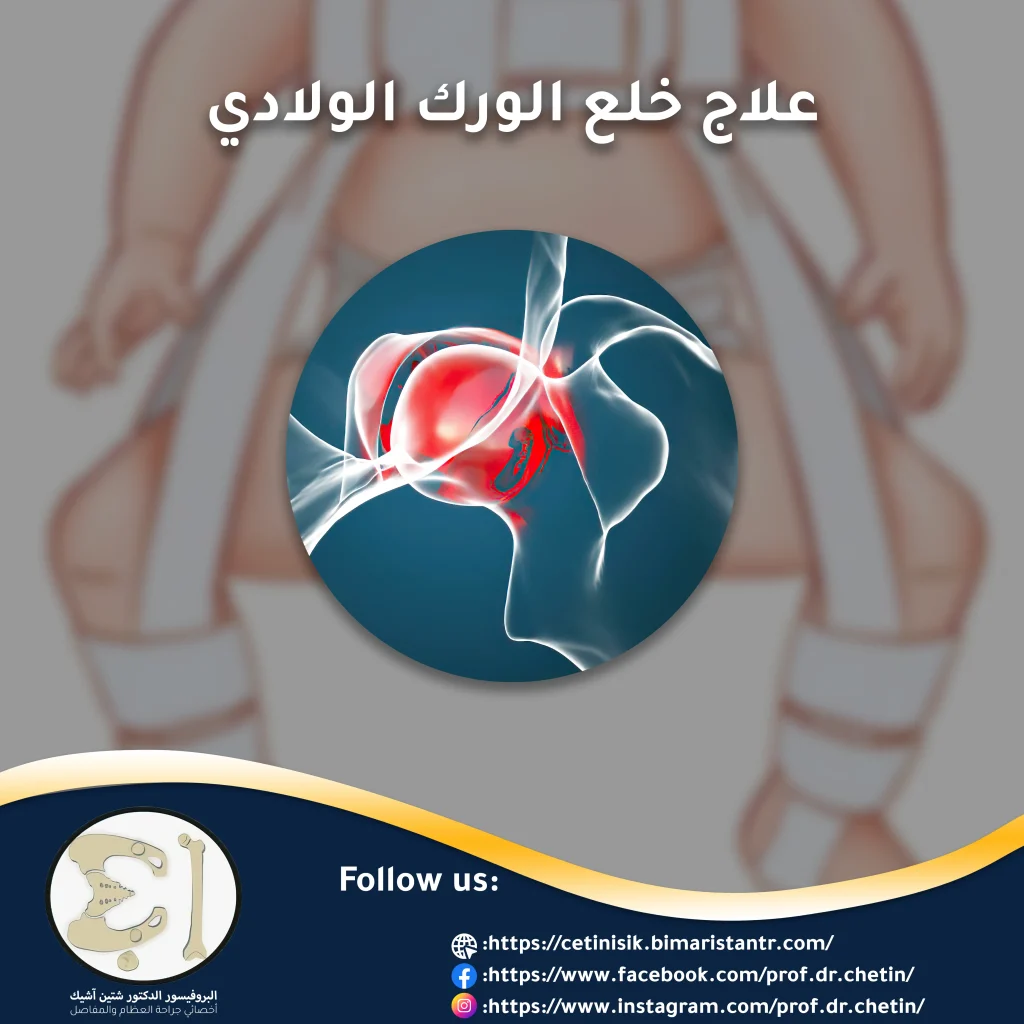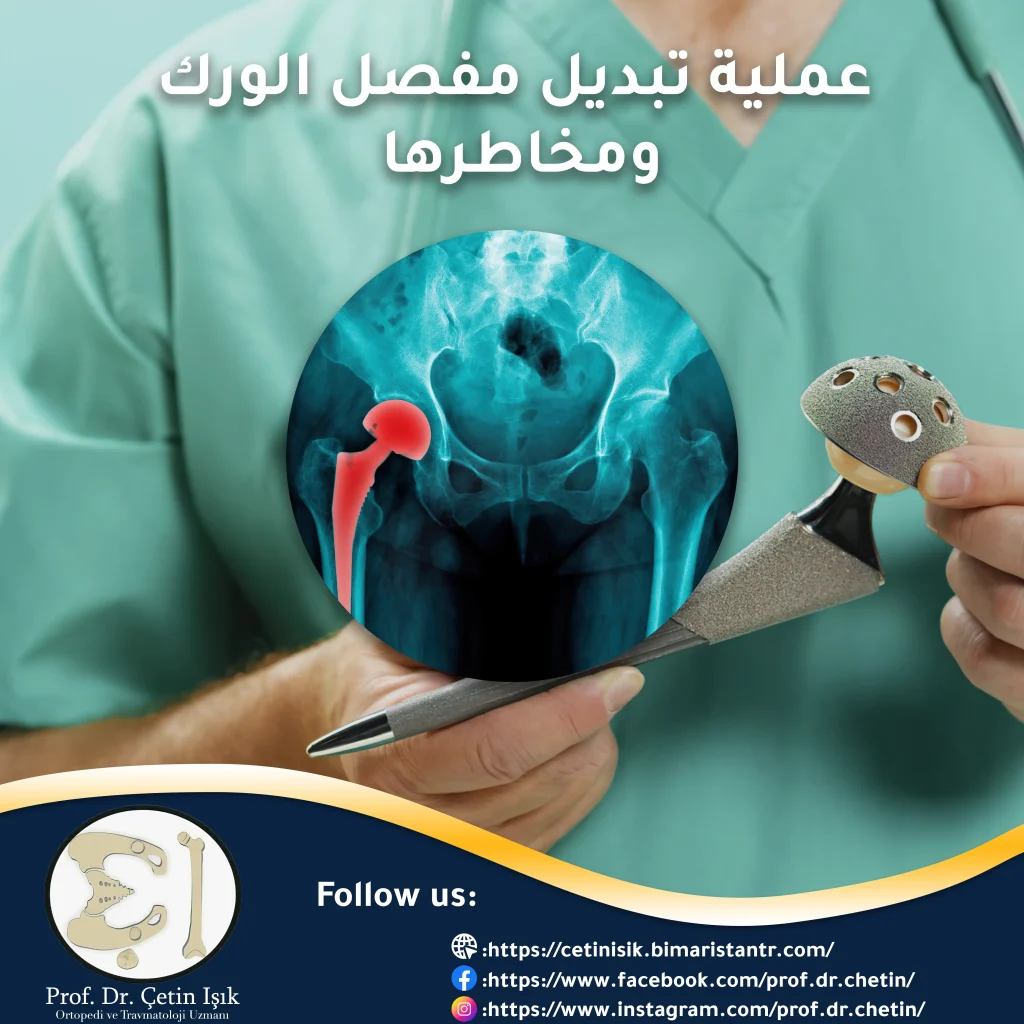Hip arthroplasty remains an effective treatment for pelvic problems that require surgery and is a common option when the joint cannot be completely replaced or when a complication occurs after the replacement procedure.
What is hip fixation?
What is meant by hip joint fusion surgery is to fuse this joint so that the joint space is completely repaired, which includes inserting screws, plates, special screws, etc., without or with cement plaster, to permanently fix and support the joint.
This usually results in the bones joining together to become one bone, as this helps to greatly strengthen the joint, as it can now bear greater weights.
The main goal of the joint fixation process is to fully or partially restore the damaged joint to its previous activity, while strengthening and stabilizing the joint if it is weak and unstable. In fact, this operation is rarely performed nowadays, as most orthopedic surgeons replace the joint when there is a problem with it.
In the past, surgical fixation of the joint was relied upon to manage most cases of severe arthritis or serious injuries, where the doctor’s goal in this procedure was to relieve the patient’s pain and give him the ability to move his joint again, even if that was to a small extent sometimes.
Joint fixation surgeries are still a good option in relieving joint pain and restoring motor activity. Current techniques provide acceptable results, especially those that preserve the pelvic bones and do not affect the muscles. It is important to educate patients as it is part of the treatment.
Joints that undergo fixation in orthopedic processes also include:
- Lumbar spine
- wrist
- fingers
- Knee
- ankle and foot
Profile of the hip joint
The hip joint is one of the synovial joints that connects the femur on the one hand and the glenoid cavity in the pelvic bone on the other hand. It is multi-axial and allows a wide range of movement such as rotation, grip and extension. It is more stable than the shoulder joint, which is characterized by a greater capacity for movement in return.
The bones within the joint bear the weight of the body, so the hip is usually subjected to great pressure when moving it, and therefore there are many structures adjacent to it that provide important structural support, including:
- The most important ligament is the femoral head ligament.
- The muscles are distributed in several front groups that bend the thigh at the hip and the back moves the joint in the opposite direction.
People who need hip joint fixation
Hip arthroplasty is recommended for people with the following conditions:
- Arthritis
- Osteoarthritis.
- osteoporosis
- Tuberculosis of the joints
In addition, the doctor may suggest performing a joint fixation operation when there is a problem in the affected limb or difficulty in movement and in other complaints such as:
- Joint replacement surgery was not successful or the artificial joint caused fractures or dislocation of the joint.
- It is not possible to install an artificial joint due to the fact that the patient's health condition is difficult.
- Elderly people who refuse to undergo joint replacement due to their privileged lifestyle.
- Very active young people who do not wish to have a total hip replacement.
- Patients who suffer from drug addiction, as this may lead to infection of the inner part of the artificial joint.
Hip arthroplasty for children and adolescents
There are several distinct considerations when performing surgery in children, the most important of which is that children live for longer periods, that is, the operation must be more effective and have longer-lived results than its counterparts in the elderly, and we must not forget that the bone in children is in the growth stage, as this will lead to a change in the parameters of the joint With time.
The children's active lifestyle is taken into account as they expect that hip arthroplasty will make them able to walk and exercise easily, and here comes the role of the expert doctor who will objectively explain how the results of the operation will be.
In general, the typical case of a child or young person who needs hip arthroplasty is characterized by the following:
- Between 12 and 19 years old.
- He had several previous pelvic surgeries.
- He suffers from osteoarthritis following a traumatic injury.
- Osteoarthritis of the corresponding knee or the contralateral hip.
- Very active lifestyle.
A a British study I published in 2022 that most of the children suffering from osteoarthritis in the hip joint who underwent the operation showed good movement improvement, despite the presence of some pain sometimes in adjacent joints.
Preparing for hip arthroplasty
Preparing for a hip joint fixation operation is no different than replacing it. There are several instructions that the patient must follow:
- Excess weight loss: Losing excess weight helps greatly after the operation, as it reduces the incidence of fractures after the operation and its complications, as it is common for the femoral neck fracture to occur in obese people.
- Quit Smoking: Nicotine consumption affects blood flow and may slow down the healing process.
- Exercise: Strengthening the muscles surrounding the hip greatly helps to support it after the operation, as it is one of the most important preparations.
- Avoid blood thinners: Such as aspirin and warfarin, where it is advised to stop taking them for several weeks before performing the hip joint surgery.
- Changing the furniture of the house: While sitting, the chair or seat must be high and have armrests, and everything that obstructs walking in the house and may lead to stumbling must be removed from the thief.
Surgical technique in hip arthrodesis
First, the surgical team will transfer you to the operating room, where patients will usually be given general anesthesia, and in a few operations, the surgeon chooses local or regional anesthesia.
After anesthesia, a deep surgical incision is made in the skin and dissection takes place to reach the joint that we will replace. It is important to get a good look at it. Damaged and damaged tissues are removed as this allows for a direct connection between the femur and the pelvis.
Through this connection, the bones gradually fuse with each other, and when this is not possible, a bone graft is brought in that is fixed between the two bony surfaces and a special compound called bone cement is placed.
In the end, in order to stabilize the ends of the joint, sheets of metal are used, and metal wires may be used to reduce the occurrence of problems and vibration as much as possible, and these plates and wires do not need to be removed later, as they remain after the operation to fix the hip joint permanently.
Post hip arthroplasty
Patients can go home after two or three days of hip replacement surgery, they can drive after several weeks, and return to work is possible after about a month.
The hip joint fixation process can take six months, so the final results of the operation may not be noticed before this period.
Hip exercises
Walking is the best exercise after hip replacement surgery, but you must pay attention not to strain the joint, and it is important to note that the distance that you can cover after the operation increases gradually.
It is advised to stay away from high heels and uncomfortable shoes after the operation.
There are also exercises to strengthen the hip joint, which will be explained later.
Disadvantages of hip joint fixation
Side effects may occur immediately after the installation process or within the next 24 hours, which are:
- bleeding
- Arthritic sepsis
- Venous thrombosis
- femur fractures
- Lack of bone fusion (i.e. the femur with the hip)
- Improper joint position.
As for the long-term problems, they are mainly related to the adjacent joints, such as:
- Pain in the opposite knee joint
- lower back pain
- Pain in the contralateral hip joint
Late complications may appear at least 20 years after hip replacement surgery, and of course any of them are much less severe than the consequences of refusing surgery or failing hip replacement.
Alternatives to hip arthroplasty
Certainly, some patients will refuse to perform any operation, whether it is a complete or partial replacement, or fixation of the joint. Therefore, some alternatives must be suggested that may not solve bone problems permanently, but it is a good option to relieve symptoms.
Plasma injection of the pelvic joint
A relatively new treatment, but it is used only in young people with degenerative hip problems with moderate symptoms, as there is no need for surgery such as joint replacement or surgical fixation.
I came up with American study I underwent surgery in 2020, to the effect that injections into the hip joint affected by mild osteoarthritis improved all symptoms by a significant percentage, except for the pain, which gradually decreased from the third month after the procedure until 12 months.
Physiotherapy exercises for the hip joint
Sometimes the thigh or hip joint suffers from fatigue as a result Muscle spasm And doing strenuous work, so it is useful to do physical therapy to improve joint position and relax tense muscles and ligaments.
The most important exercises that help relieve pressure on the pelvic and hip joints include:
- dilation
- screwing up
- Balance exercises
- Practice standing and gait
- Fixation of the hip joint
Herbal treatment of osteoarthritis
Some herbal materials are useful in relieving bone and joint pain, especially in cases of: Hip arthritis But it certainly does not replace appropriate treatment if the symptoms are apparent and bothersome to the patient, as the latter require specialized medical consultation to approve the appropriate treatment.
Sometimes it is useful to use:
- Aloe vera: So popular that leaf extract is applied to the affected hip joint to relieve symptoms.
- Indian gum: It has anti-inflammatory properties that help greatly in case of stiffness and swelling of the hip joint.
- Cat's Claw: This plant contains chemicals that suppress the inflammatory process. It helps in case of weak immunity, but it is not recommended to take it with blood-thinning medications.
- Eucalyptus: The tannins found in its leaves act as a natural analgesic, as eucalyptus oil is used in most joint pain creams.
You can Contact us Learn more about hip and second joint arthroplasty.
Sources:
- Mercy Health
- The Association of Bone and Joint Surgeons
- Orthopedic Proceedings
- Irish Journal of Medical Science
- Healthline
Common questions
It is important to take into account the position of the joint after a hip or hip replacement surgery, and avoiding strenuous sports helps a lot.
Pain in the pelvic joint, fever, and limited movement.
There may be a problem with the bones or the joint itself, and it is necessary to see a doctor if the crackling continues for a long time and causes psychological distress to the patient.
It may reach $15,000, but the average operation costs less than $10,000.
Each case is treated individually, but it is common for your surgeon to suggest a total hip replacement unless there is a contraindication to it.



